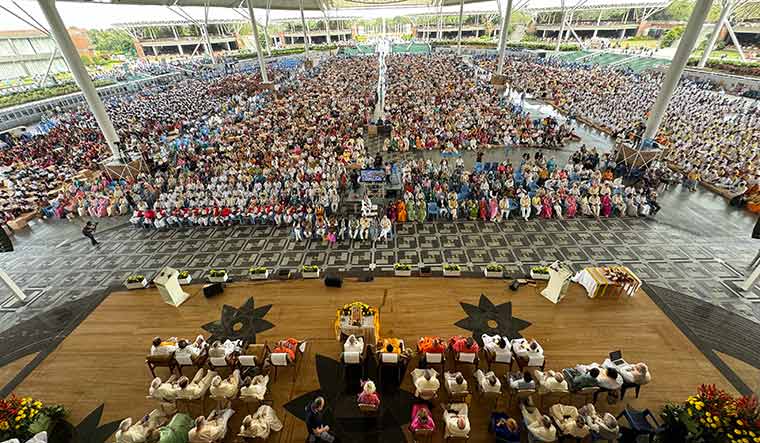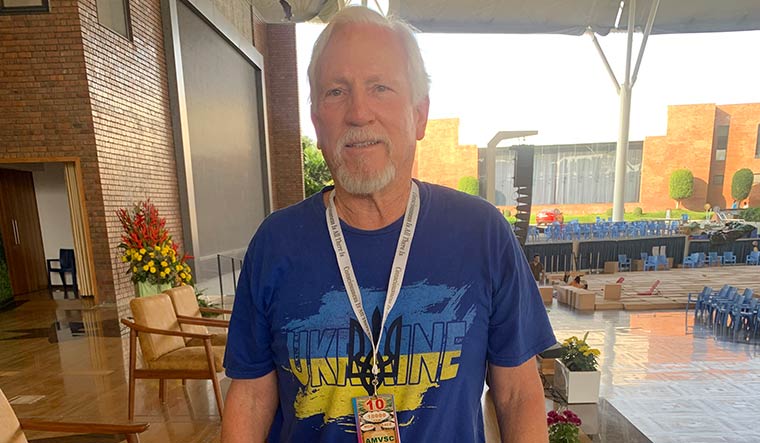IN EARLY 2005, security checkpoints at the Abu Ghraib prison complex in Iraq―notorious for torture and abuse of its inmates―were overrun by armed militants. The surprise attack met with strong resistance from US coalition forces guarding the site. Several American soldiers suffered injuries, and many militants lost their lives. Brian Rees, a doctor with the US military, remembers rushing out to treat civilian casualties. Whenever he got a chance, he said, he would retreat to a corner and meditate.
Rees has learned to find peace among chaos. He meditates twice a day―20 minutes each in the morning and in the evening. Transcendental Meditation (TM) has been a source of strength for him while serving in Iraq and in Afghanistan. It helped him beat long periods of boredom and to cope with the shocking sights of blood and gore. “I felt I could use TM to reset. It kept me resilient on the ground. It is important to maintain a healthy rhythm or things can go very wrong,” said the veteran about the benefits of meditation in a war zone.
Rees has introduced hundreds of US veterans to TM in the last 10 years, helping them return to normalcy after stressful missions. He still remembers a veteran telling him just two minutes after attending a session that TM was going to save his life. “The veterans have a lot of questions on why this is happening. But they have no answers,” said Rees. “TM will really help them see hope and remove negative aspects.”
Nearly 4,000 TM practitioners from outside India like Rees and 6,000 Indians took part in a residential meditation programme organised by the Global Union of Scientists for Peace (GUSP), a group that works to carry forward the legacy of the late Maharishi Mahesh Yogi. It was held for two weeks from December 29 at the Kanha Shanti Vanam ashram near Hyderabad. The programme was intended to trigger a world peace field based on a theory propagated by the Maharishi.
 Uniting for the world: Transcendental Meditation programme by the Global Union of Scientists for Peace in Hyderabad.
Uniting for the world: Transcendental Meditation programme by the Global Union of Scientists for Peace in Hyderabad.
Tony Nader, chairman of GUSP, explained the idea behind getting 10,000 people at one place. “The research is based on findings of 50 years that when one per cent of the total population practises Transcendental Meditation in any city, there is a reduction in crime, conflict, hospital admission and road accidents. One per cent of the world population today would be 81 million and it is a big number to bring together for meditation. The Maharishi produced a new technique, which is based on Patanjali yoga sutras, where it was found that the square root of one per cent of the population is enough to achieve the desired effect. It means that instead of 81 million, its square root―9,000―could be used. The number 10,000 was selected to have the safety factor on top of the needed number.”
Nader, who leads TM-related organisations in more than 100 countries, hails from conflict-ridden Lebanon and credits meditation for helping him survive the horrors of the civil war in the 1970s. The 14-day programme saw participants practise basic TM, yoga sutras and flying sutras. Frederick Travis, director of the Centre for Brain, Consciousness and Cognition, Maharishi University of Management, Iowa, used a special device fitted with 19 sensors on a participant to study the impact of group meditation on the brain. He recorded a high coherence in the brain as a result of meditation practised by thousands in the vicinity.
Alex Kutai, a theatre actor-turned PR professional from Israel, said meditation was an antidote to war. Kutai, an active TM teacher, was drawn to the movement after the 1973 Yom Kippur war. “After every war, the interest in TM becomes high. Thousands learned TM after the Yom Kippur war. I thought it could support my well-being,” he said.
Kutai said many people were suffering from trauma, depression and pain because of the ongoing Israel-Gaza conflict. “When people along the Gaza Strip had to be evacuated, we taught them meditation so that they could cope with the loss. We are also teaching TM for free to those who are suffering from the loss of lives of close ones,” he said. Kutai lives in Hararit, a village near the Lebanon border which was created by a community of TM members in the 1980s. Though he has not taught TM to Palestinians, Kutai said he was willing to teach friendly Arabs who reside around his village.
Another participant in the programme was Vadym Bykovets, a Ukrainian who nurses war wounds even though he is not physically involved in the war with Russia. The 49-year-old lives in Lithuania and works in the private sector. He counts his friends and acquaintances among those who died or were seriously wounded. He encourages fellow Ukrainians to practise meditation. “I feel that they are emotionally wounded and stressed. Without meditation, they would feel terrible. They are even scared of loud sounds.” How does meditation help him? “War is a painful topic. Regardless of what information I get from back home, I meditate,” he said. “It cleans my mind and soul, and I do not feel involved in that situation.” The reason Bykovets came all the way to Hyderabad is to support the belief that meditation is the right medium to achieve global peace.



